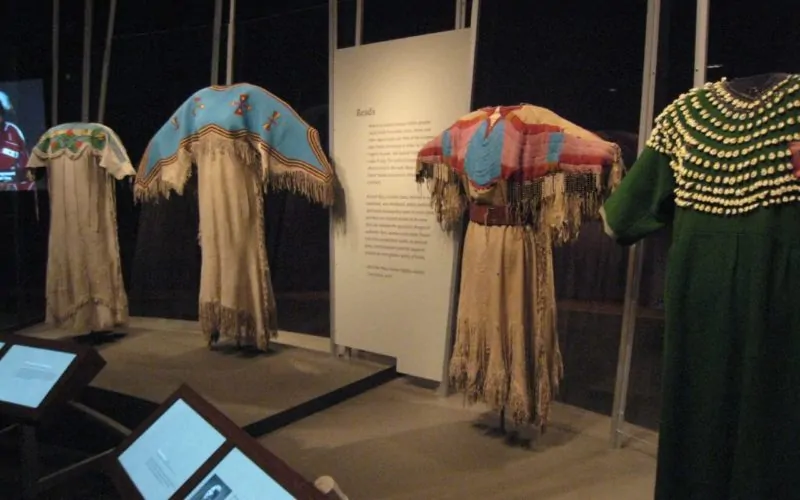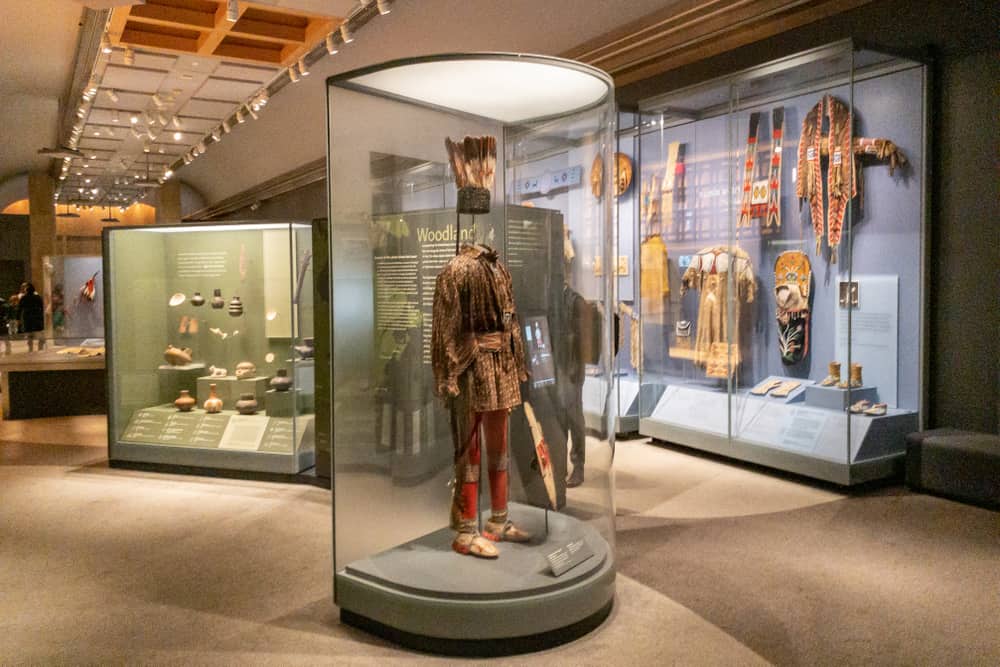
Employment Opportunities in Native American Museums: A Comprehensive Overview
Native American museums and cultural institutions represent a vital and dynamic sector dedicated to the preservation, interpretation, and revitalization of Indigenous cultures, languages, and histories. Unlike traditional Western museums that often approached Indigenous cultures through an ethnographic lens, these institutions are increasingly rooted in principles of self-determination, cultural sovereignty, and decolonization. This paradigm shift has created a diverse array of employment opportunities, ranging from highly specialized academic roles to community-based cultural positions, all contributing to the profound mission of these organizations. This article delves into the various employment opportunities within Native American museums, outlining typical roles, required qualifications, challenges, and the profound impact of these positions.
The Evolving Landscape of Native American Museums
The landscape of Native American museums is broad, encompassing tribal museums and cultural centers, national institutions like the Smithsonian’s National Museum of the American Indian (NMAI), university-affiliated collections, and state-run facilities with dedicated Indigenous exhibits. Each type of institution offers unique employment contexts, but all share a common goal: to present authentic, community-driven narratives that challenge historical misrepresentations and foster cultural understanding.
The growth of tribal museums, in particular, signifies a crucial movement towards self-representation and the assertion of cultural sovereignty. These institutions are often deeply integrated into their respective communities, serving as centers for language instruction, traditional arts, ceremonial practices, and intergenerational knowledge transfer. Employment within these settings frequently requires a deep understanding of local tribal customs, languages, and protocols, alongside professional museum practices.

Diverse Employment Categories and Roles
Employment opportunities in Native American museums span a wide spectrum of disciplines, requiring a blend of academic expertise, practical skills, and cultural competency.
1. Curatorial and Collections Management
These roles are central to the museum’s mission of preserving and interpreting cultural heritage.
- Curator: Responsible for research, exhibition development, and interpretation of collections. In Native American museums, curators often work collaboratively with tribal elders and community members to ensure culturally appropriate narratives and ethical representation. They may specialize in specific cultural groups, time periods, or material types. Qualifications typically include advanced degrees in museum studies, anthropology, art history, or Indigenous studies, coupled with significant research and exhibition experience.
- Collections Manager/Registrar: Oversees the physical care, documentation, and movement of museum collections. This role is critical for inventorying artifacts, ensuring proper storage conditions, and managing loans. A paramount responsibility in Native American museums is adherence to the Native American Graves Protection and Repatriation Act (NAGPRA), requiring meticulous record-keeping and facilitating the return of ancestral remains and cultural objects to lineal descendants and culturally affiliated tribes. Expertise in database management, conservation principles, and NAGPRA compliance is essential.
- Conservator: Specializes in the preservation and restoration of cultural materials. Native American conservators often employ a unique blend of scientific methods and traditional Indigenous knowledge, respecting the cultural integrity and spiritual significance of objects. This requires specialized training in conservation science, often with a focus on organic materials, textiles, or archaeological artifacts.

2. Education and Public Programs
These professionals are the bridge between the museum’s collections and its audiences, fostering learning and engagement.
- Museum Educator/Program Coordinator: Develops and implements educational programs for diverse audiences, including school groups, families, and adults. Programs often emphasize Indigenous perspectives, storytelling, traditional arts, and cultural demonstrations. Strong pedagogical skills, cultural sensitivity, and an ability to translate complex cultural concepts into accessible learning experiences are key.
- Cultural Interpreter: Often from the local Indigenous community, these individuals share traditional knowledge, stories, and practices directly with visitors. They may lead tours, demonstrate crafts, or participate in public ceremonies. Fluency in an Indigenous language and deep knowledge of cultural protocols are highly valued.
- Outreach Coordinator: Connects the museum with its broader community, organizing events, workshops, and partnerships that extend the museum’s reach beyond its physical walls. This role is particularly important for tribal museums in fostering community engagement and revitalization efforts.
3. Administration and Leadership
These roles ensure the smooth operation and strategic direction of the institution.
- Museum Director/CEO: Provides overall leadership, strategic planning, fundraising, and financial management. Directors of Native American museums must navigate complex relationships with tribal councils, funding bodies, and external partners while upholding the institution’s cultural mission. Experience in non-profit management, fundraising, and a deep understanding of Indigenous governance are crucial.
- Business Manager/Operations Manager: Manages the museum’s finances, human resources, facilities, and daily operations.
- Development/Grant Writer: Secures funding through grants, donations, and sponsorships, essential for the sustainability and growth of Native American cultural institutions, which often face funding challenges.
4. Research and Documentation
These roles focus on generating and disseminating knowledge about Indigenous cultures.
- Ethnohistorian/Anthropologist: Conducts research on tribal histories, cultures, and traditions, often in collaboration with community members. Emphasis is placed on community-based research methodologies that prioritize Indigenous voices and perspectives.
- Oral Historian: Collects and preserves oral traditions, personal narratives, and community histories, often involving interviews with elders and community members.
- Linguist/Language Revitalization Specialist: Works to document, preserve, and teach endangered Indigenous languages, a critical component of cultural survival for many communities.
5. Digital and Media Services
With the increasing reliance on digital platforms, these roles are becoming more prominent.
- Digital Asset Manager: Manages the museum’s digital collections, including photographs, audio, video, and digitized artifacts, ensuring their accessibility and long-term preservation.
- Web Developer/Multimedia Specialist: Designs and maintains the museum’s online presence, develops virtual exhibitions, and creates multimedia content for educational programs and outreach.
6. Community Engagement and Repatriation Specialist
- NAGPRA Coordinator/Repatriation Specialist: A specialized and ethically crucial role, focusing solely on the identification, documentation, and repatriation of ancestral remains and cultural items in compliance with NAGPRA and other relevant legislation. This requires meticulous research, strong negotiation skills, and profound cultural sensitivity, often working directly with tribal governments and spiritual leaders.
Essential Qualifications and Skills
Successful employment in Native American museums requires a unique blend of academic and practical qualifications:
- Academic Background: Degrees in museum studies, anthropology, history, art history, archival studies, or specialized Indigenous studies programs are highly valued. For technical roles like conservation, specific scientific training is necessary.
- Traditional Knowledge and Cultural Competency: Perhaps the most crucial qualification is a deep respect for and understanding of Indigenous cultures, epistemologies, and protocols. For many positions, particularly in tribal museums, direct affiliation with the community or extensive experience working with specific tribal nations is highly advantageous. Knowledge of an Indigenous language is a significant asset.
- Professional Skills: Strong research, writing, communication (both oral and written), project management, digital literacy, and organizational skills are universally important.
- Interpersonal Skills: Collaboration, empathy, cross-cultural communication, and the ability to build trust and respectful relationships with diverse stakeholders, especially tribal communities, are paramount.
- Ethical Framework: A commitment to decolonization, ethical stewardship of cultural heritage, and Indigenous self-determination is fundamental.
Challenges and Opportunities in the Sector
While rewarding, working in Native American museums presents specific challenges and opportunities.
Challenges:
- Funding: Many Indigenous cultural institutions, especially smaller tribal museums, operate with limited budgets, impacting staffing levels, salaries, and program development.
- Capacity Building: There is a continuous need for training and professional development opportunities to equip Indigenous professionals with the specialized skills required for museum management and cultural stewardship.
- Geographical Isolation: Some tribal museums are located in remote areas, posing challenges for recruitment and access to professional networks.
- Decolonization Work: The ongoing process of decolonizing museum practices can be complex, requiring difficult conversations about historical injustices, power dynamics, and the re-centering of Indigenous voices.
Opportunities:
- Growth of Tribal Institutions: The number of tribal museums and cultural centers continues to grow, creating more localized employment opportunities for Indigenous peoples.
- Decolonization Movement: The broader museum field is increasingly recognizing the importance of decolonization, creating space for Native American museums to lead innovative practices and influence national discourse.
- Digital Humanities: Advancements in digital technology offer new avenues for cultural preservation, language revitalization, and global outreach, creating roles for digital specialists.
- Increased Public Awareness: Growing public interest in Indigenous cultures and histories drives demand for educational programs and authentic representation.
- Inter-institutional Collaboration: Partnerships between Native American museums and larger institutions facilitate knowledge exchange, resource sharing, and professional development.
Impact and Future Directions
Employment in Native American museums offers more than just a job; it is a profound commitment to cultural continuity, identity, and sovereignty. For Indigenous individuals, these roles provide an opportunity to connect with their heritage, serve their communities, and contribute to the revitalization of their languages and traditions. For non-Indigenous professionals, it offers a unique chance to engage in ethical, collaborative work that supports Indigenous self-determination and promotes a more inclusive understanding of history.
The future of employment in Native American museums will likely see continued emphasis on Indigenous leadership, language revitalization, digital innovation, and community-driven initiatives. As these institutions continue to evolve as critical spaces for healing, education, and cultural affirmation, the demand for dedicated, culturally competent professionals will only grow, ensuring the vibrant future of Indigenous heritage for generations to come.


